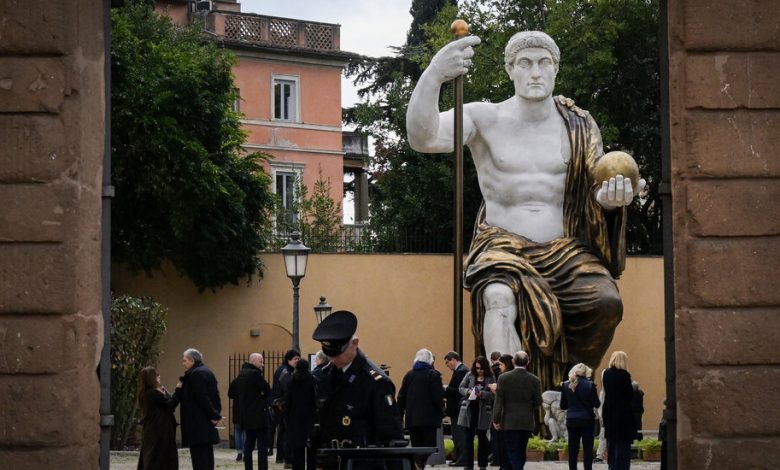Rome’s Ancient Grandeur Towers Anew With a Copy of a Colossus

It may not be authentic, exactly, or very old at all.
But the colossal statue of a fourth-century emperor, Constantine the Great, is a newly erected monument to Rome if nothing else: a homage to the ancient city’s grandeur, and of its endless capacity to remake itself.
In this case, the remaking was literal.
Towering over visitors, the 43-foot seated statue was painstakingly reconstructed by a Madrid-based digital art group, Factum Foundation, from the 10 known fragments of the original sculpture. The reconstructed statue was installed in a garden in Rome’s Capitoline Museums this week, close to where the Temple of Jupiter, the most important temple of ancient Rome, once stood.
“Seeing Constantine, on top of the Capitoline Hill, looking out at the whole of Rome, he feels extraordinary,” said Adam Lowe, the founder of the Factum Foundation, which originally created the statue for a 2022 exhibit at the Prada Foundation in Milan.
The head and most of the other fragments of the colossal statue were discovered in 1486, in the ruins of a building not far from the Colosseum. They were transferred to what eventually became the Capitoline collection, and nine of those ancient fragments — including a monumental head, feet and hand — are permanently on show at the museums.
The fragments found fame from the moment they were excavated, said Salvatore Settis, an archaeologist and one of the curators of the Prada exhibit. “They have been etched by leading artists from the 15th century on,” he said, adding that the sculpture also captured the attention of more modern artists like Robert Rauschenberg, who famously photographed the pieces in the 1950s.
Five hundred years and many more technological advancements later, a team from the Factum Foundation spent three days using photogrammetry, a 3D scan with a camera, to record the fragments in the Capitoline courtyard. Over the course of several months, the high-resolution data became 3D prints, which were used to cast replicas, made of acrylic resin and marble powder.
We are having trouble retrieving the article content.
Please enable JavaScript in your browser settings.
Thank you for your patience while we verify access. If you are in Reader mode please exit and log into your Times account, or subscribe for all of The Times.
Thank you for your patience while we verify access.
Already a subscriber? Log in.
Want all of The Times? Subscribe.
